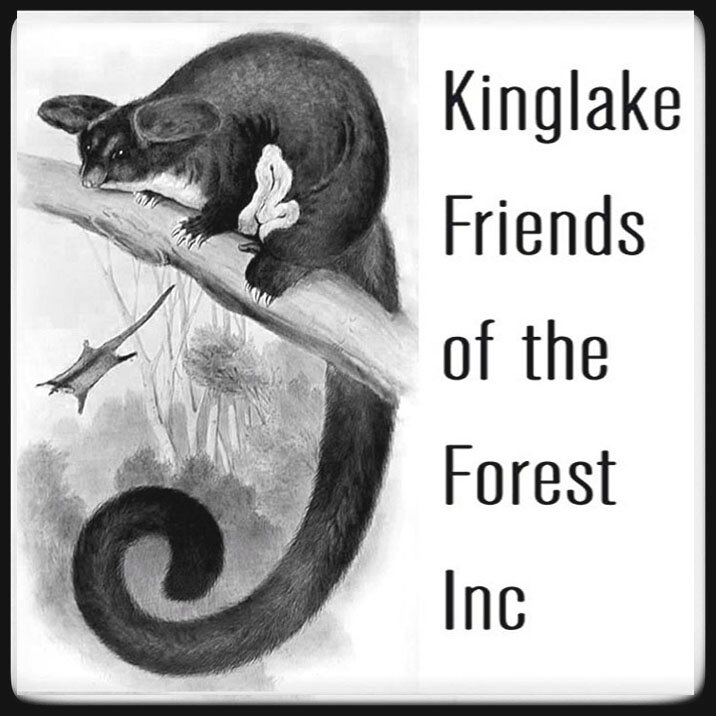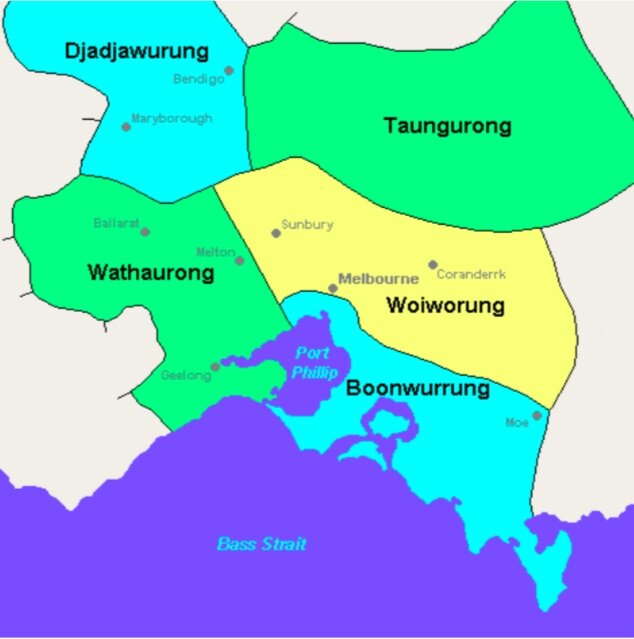Humans and The Central Highlands: A Very Short History
The Central Highlands of Victoria is a term for a geographic area not used much outside the world of commercial forestry (and its opponents). There are 10 Regional Forest Agreements across Australia, the Central Highlands RFA being one, and these apportion our state forests into zones for economic exploitation.
The Central Highlands Regional Forest Agreement Area
Before this geographic area was given this English name, the Central Highlands was the territory of several language groups. Primarily this was the Taung wurrung (in the north) and the Woi wurrung people (to the south), and perhaps some of the territory of the Boon wurrung.
These language groups, shown below (with different spellings), formed a confederation called the Kulin Nation. Further east, in Central Gippsland, which may also have included land we now call the Central Highlands, was the land of the Gunai-Kurnai Nation.
The Kulin Nation
The word ‘wurrung’ in the names of these groups meant mouth or speech. These five language groups were comprised in turn of clans, about 300 to 500 strong, which spoke the same language but occupied distinct territories. The Taung wurrung had at least 9 clans, whilst the Woi wurrung had 5 clans.
These clans were the most important social group within Kulin society, since it was the land- owning unit (Presland, Gary, 2010. First People: the Eastern Kulin of Melbourne, Port Phillip and central Victoria). The clan you were born into determined your moiety, which would be either bunjil (eaglehawk) or waa (crow). They were Dreaming figures who were the creators of the world, including all humans.
Clan members operated in small family based units, often referred to as bands, and which moved according to the seasons and the availability of food. The length of time they lived in their territory - at least 1500 generations - allowed the people of the Kulin Nation to recognise ecological limits and take measures to sustain food sources.
Bruce Armstrong’s sculpture ‘Eagle’ at Docklands
The members of the Kulin nation had much in common – related languages, ceremonies, creation myths and kinship ties. These shared beliefs served a practical purpose as well, with marriage usually taking place outside their wurrung and always to a person of the opposite moiety. So, a bunjil person had to marry a waa person.
Each Aboriginal person thus had multiple identities, that of their moiety, clan, language group and confederation, which most European observers found almost impossible to fathom (Broome, Richard, 2005. Aboriginal Victorians: A History since 1800).
The language groups of the Kulin Nation would regularly meet in the area of what is now Melbourne (Naarm). At these times large groups camped close to the many wetlands around the area, including what is now Docklands, and near the Botanical Gardens. At these places, sufficient food resources were available to temporarily sustain large groups of people. These meetings would have serious business, such as settling disputes, as well as corroborees ‘public displays of dancing skill and a means of conveying a new story, developed and retold by the performers’ (Presland, Gary, 2010. First People: the Eastern Kulin of Melbourne, Port Phillip and central Victoria).
THE ARRIVAL OF EUROPEANS
People of the Kulin nation would have seen Europeans even before John Batman and John Pascoe Fawkner arrived in 1835 at the site which would later be called Melbourne. Sealers were present along the coast, and they saw escaped convicts too, notably William Buckley who lived amongst the Watha wurrung for 32 years.
There were also explorers/ invaders coming south from Sydney. In 1824 Hamilton Hume and William Hovell passed through the area, in part by following an aboriginal track which roughly followed the present Yea to Kinglake road. They then climbed a mountain which they labelled Mt Disappointment, a name it still bears.
However, the arrival of Batman and Fawkner at Naarm, on the north bank of the Birrarung, heralded a significant increase in European arrivals. Although relations were initially ‘marked by affability’ (Broome, Richard, 2005. Aboriginal Victorians: A History since 1800), Europeans saw little of worth in the successful culture of the first inhabitants. Aboriginal people were initially interested in the novelty of the European culture, and also saw the practicality of metal implements, guns and blankets, before their culture was severely disrupted by dispossession, disease and outright violence.
From a population estimated at about 15,000 at the time of European settlement, the number of Kulin people fell by about 80% within two decades. Yet despite this onslaught, Aboriginal people never stopped caring or defending their land from the European settler project. Sovereignty was never ceded.
THE FORESTS OF THE CENTRAL HIGHLANDS
In a way, industrial logging today in the Central Highlands reflects the mindset of the first settlers, in which nature is not seen as possessing intrinsic worth, but is instead a resource to be exploited for profit. As part of this project, the English language is used to first expropriate, then exploit the land. Just as Europeans labelled landscape features in Victoria with words from their own language – clearing the ground mentally of its traditional owners - so the Victorian logging agency VicForests reduces the forest to an economic resource through the application of its own terminology.
Forests are termed a ‘biological asset’. The agency then apportions this asset into small areas of operations called ‘coupes’. The names for these coupes seem almost purposefully disrespectful, with names of current Central Highlands coupes including Jokes, Funny, Pilchard, Anchovy and Carbonara. These coupes then have plans drawn up in a Melbourne office for the removal of their ‘timber’, which is further categorised into ‘sawlog’ and ’pulp’.
The consequence of this bloodless process of economic extraction is that the animals known to the Taungurung people, such as the balayang (bat), gawarn (echidna) and goorbil (koala), lose their homes and often their lives (An app, Taungurung language, is available on the App Store for Apple devices). And the forests that were cared for by indigenous custodians for thousands of years, which are now the inheritance of all Australians, are sacrificed for the god of money.
Mountain Ash (Eucalyptus regnans)




